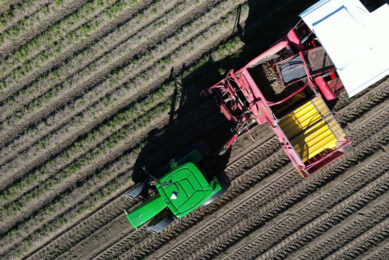5 tips to avoid downtime with RTK GPS

If RTK GPS fails, the user clenches his fists. These tips can avoid downtime.
When I was asked to write a blog about precision agriculture, the subject was already decided: GPS (global positioning system). The device that is at the basis of most precision farming activities.
GPS is an ingenious piece of technology that originated in the American army. The device allows you to determine your position on earth. If you know where you are and where you want to go, GPS helps with navigation. It is also helpful in tracking, mapping and timing.
Expensive words, but trust me, you probably know these functions. Navigating is what most farmers and contractors do. With the phone to find the right field and with auto steering to tightly connect each operation in the field.
Tracking, mapping and timing
In the Netherlands, we do not yet do much tracking. In countries where fields are larger, knowing where a machine is located is useful for planning purposes. However, if the machine comes to a standstill, the operator will have some explaining to do.
Mapping, on the other hand, is what virtually every GPS user does. Parcels, AB lines, but also natural obstacles such as bird nests are recorded (and preferably shared between tractors).
The hippest thing is timing. With GPS comes not only a longitude and latitude, but also a very accurate time signal. With that, you can do math. For example, how long an activity lasted, or how often people moved in a day. It’s all very handy, but unfortunately practice can be more difficult.
Tips for using RTK GPS
GPS accuracy is often a matter of concern in the agricultural sector. Crops have a fixed width and machines are geared to that. To make the best possible use of the land, it is desirable for the GPS to have a high degree of accuracy. Preferably 2 centimeters. If that works, the hands are off the wheel.
But if RTK, the name for the accurate GPS, fails, the fists are clenched. Downtime! And we don’t want that. Therefore, 5 tips to prevent stagnation and/or the associated annoyance.
- Buy a new antenna regularly. Technology changes and antennas get more and more bandwidth. More bands = more frequency = more satellites = more accuracy.
- Stay true to one brand. This makes it easier to share data, such as AB lines. Data from different brands are not always easily interchangeable.
- Test a device before you buy it. The quality of the RTK signal depends on the technique used by the supplier. It is not equally good everywhere in the country. Seeing is believing.
- Choose a supplier with a good 24/7 service department. Because do you stop sowing at 5 o‘clock on a Friday afternoon?
- Continue to marvel at GPS.
Like my colleague’s son, who with his newly acquired tractor driving license earns a little extra money during the week working for his neighbour without skipping school. With his hands off the wheel he works the land and at the same time he follows online lessons via Teams on his phone. This is only possible with GPS.
Also read: GPS test: A choice between convenience or freedom
Join 17,000+ subscribers
Subscribe to our newsletter to stay updated about all the need-to-know content in the agricultural sector, two times a week.



